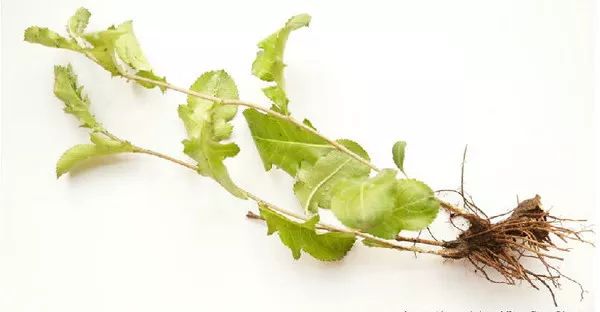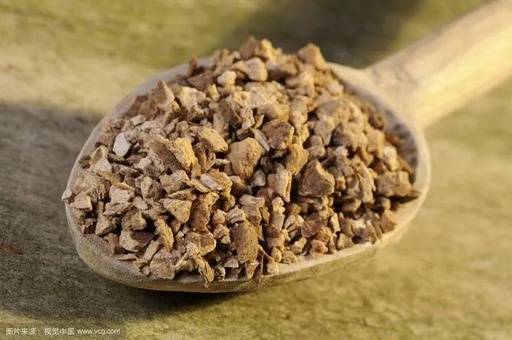
China Medicinal Materials Market Network
Public Account ID: zgycsc-com
Follow

Atractylodes (Cang Zhu) is harvested twice a year, starting in April during the spring, although the period is relatively short, with the main harvest occurring in September during the autumn. Its primary source is from wild resources. The origins of Atractylodes vary by region, generally classified into Bei Cang Zhu (Northern Atractylodes) and Mao Cang Zhu (Southern Atractylodes), while Guan Cang Zhu (Local Atractylodes) is a regional specialty. Atractylodes is a traditional and significant medicinal material in China, also known as Shan Jing, Qing Zhu, Xian Zhu, Chi Zhu, and Ma Ji, derived from the rhizome of the Atractylodes plant, which is a perennial herb. There are distinctions between Southern and Northern Atractylodes, with Southern Atractylodes (Mao Cang Zhu) produced in Jiangsu, Anhui, and Jiangxi, while Northern Atractylodes is found in Inner Mongolia, the three northeastern provinces, Hebei, and Shanxi; currently, the focus is mainly on Northern Atractylodes. The quality of Northern Atractylodes from Chengde, Hebei is particularly noted, while Southern Atractylodes is primarily harvested in the autumn and is now scarce. Northern Atractylodes is harvested in both spring and autumn.
Atractylodes has a long history of medicinal use; it is a key ingredient in various traditional Chinese medicine (TCM) formulas such as Mu Xiang Shun Qi Wan (Wood Fragrance Qi Regulation Pill), Bao He Wan (Preserving Harmony Pill), Miao Wan (Wonderful Pill), Jiu Sheng San (Nine Holy Powder), Jiu Wei Qiang Huo Wan (Nine Flavor Qiang Huo Pill), Jiu Wei Qiang Huo Granules, San Miao Wan (Three Wonderful Pill), Xiao Er Bai Shou Wan (Children’s Longevity Pill), Wu Shi Cha Granules (Noon Tea Granules), Feng Shi Die Da Yao Jiu (Rheumatism and Trauma Medicinal Wine), Rui Yi Jin Huang San (Ruyi Golden Yellow Powder), Miao Ji Wan (Wonderful Relief Pill), Chun Yang Zheng Qi Wan (Pure Yang Correct Qi Pill), Guo Gong Jiu (Duke’s Wine), Gou Pi Gao (Dog Skin Ointment), Qie Feng Shu Jin Wan (Wind Dispelling and Muscle Relaxing Pill), Sha Yao (Shan Yao), and Huo Xiang Zheng Qi Oral Liquid, as well as Yue Ju Wan (Overcoming Stagnation Pill) among others. It is one of the main active ingredients in various Chinese patent medicines such as Er Miao Wan (Two Wonderful Pill) and Er Miao San (Two Wonderful Powder), with a wide range of applications in TCM. It is also one of the important medicinal materials for export revenue in China; with increasing usage, it has now become a bulk commodity. In addition to its medicinal use domestically, it is also utilized in aquaculture, with a certain amount exported annually. The production of Chinese patent medicines using Atractylodes as a raw material is continuously expanding, leading to an increased demand for Northern Atractylodes, such as in Chun Yang Zheng Qi Wan, Xiao Er Bai Shou Wan, Er Miao Wan, San Miao Wan, Qie Feng Shu Jin Wan, Ping Wei Wan (Calming the Stomach Pill), and Huo Xiang Zheng Qi Shui (Huo Xiang Correct Qi Water). Due to the long growth period of cultivated Atractylodes, its content is lower than that of wild Atractylodes; coupled with rising land rental and labor management costs, even after three to four years of cultivation, the market price of cultivated Northern Atractylodes is unlikely to be low; Northern Atractylodes remains a long-term promising variety.

Northern Atractylodes is currently the mainstream source in the domestic market, primarily distributed in Chifeng and Hulunbuir in Inner Mongolia, Heilongjiang, northern Hebei, Shanxi, Jilin, Liaoning, Shaanxi, and Gansu, with the highest quality produced in Chengde, Hebei. Old production areas like Liaoning are attempting to cultivate Northern Atractylodes, but due to limitations in cultivation costs, geography, soil, and climate, large-scale promotion has not yet been achieved, so the large-scale market entry of cultivated products will require time to accumulate. Wild Mao Cang Zhu resources are mainly distributed in Jiangsu’s Mao Mountain, Hubei, Anhui’s Xuancheng, Jiangxi’s Wuning, and Shaanxi’s Hanzhong. The quality of Mao Cang Zhu is superior to that of Northern Atractylodes, but wild products are not available in large quantities, and the finished product prices are also higher than those of Northern Atractylodes. Although the cultivation cost of Mao Cang Zhu is relatively high, the domestic market is difficult to accept, so cultivation techniques have not been widely promoted. Currently, the Mao Cang Zhu found in Jiangsu’s Mao Mountain and Hubei’s Yingshan is primarily used for export to Japan, with little circulation in the domestic market. Guan Cang Zhu is mainly distributed in Heilongjiang, Jilin, northern Liaoning, and Hulunbuir in Inner Mongolia; although it is not included in the current domestic pharmacopoeia, it is recognized by the national drug standards of Japan and South Korea. The cultivation technology for Guan Cang Zhu has been introduced from Liaoning and Jilin, and the technology is now relatively mature, but the cultivation costs are quite high, and the planting area is limited.
The resources of Atractylodes mainly come from the wild, and cultivation has only been gradually promoted in recent years, leading to a frenzy among local people, with large amounts of wild resources being harvested, resulting in a decrease in wild resources. Coupled with years of low prices and the SARS outbreak, much of the inventory has been digested; rising labor costs have further increased the cost of Atractylodes, leading many farmers to seek work in cities, reducing the number of people available for harvesting and planting; the widening range of uses and increasing demand; local governments have strengthened management of wild medicinal materials and ecological environments, making it impossible to harvest as recklessly as before; before cultivated Atractylodes forms a scale, there is still some upward potential for Atractylodes, but after reaching a certain level, with the popularization of cultivation, price fluctuations will occur. Currently, imports from North Korea will have some impact on Atractylodes, but due to the reduction of wild resources and the increase in labor costs, the price is unlikely to drop significantly in the short term.

Atractylodes is still primarily supplied by wild resources. Currently, wild Atractylodes resources have been gradually depleted due to years of unregulated harvesting, and the government has increased efforts to combat the illegal harvesting of wild medicinal materials to protect the ecological environment. At the same time, the tight rural labor market and rising labor costs have led to a decrease in the number of harvesters, continuously reducing the supply of Atractylodes. Cultivated resources have high economic benefits, and although there has been development in recent years, the quantity is still small, and the content is lower than that of wild Atractylodes; cultivation techniques and content need improvement, and the scale of cultivation needs to be developed. However, at present, it can alleviate the market supply-demand contradiction, but it is still insufficient. Therefore, continuing to develop cultivation, improving quality and yield, will also benefit increased profitability.
Given the reduction of wild Atractylodes resources and the continuous increase in market demand, the future market trend for this product remains strong; with the difficulty of harvesting resources like Suzi, prices will likely remain high; the outlook remains optimistic.

